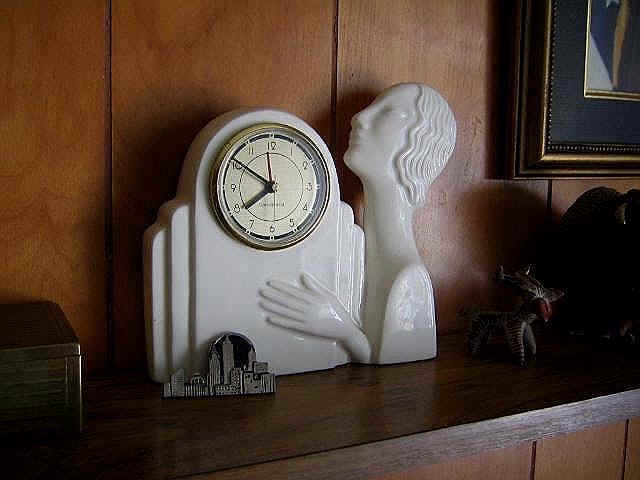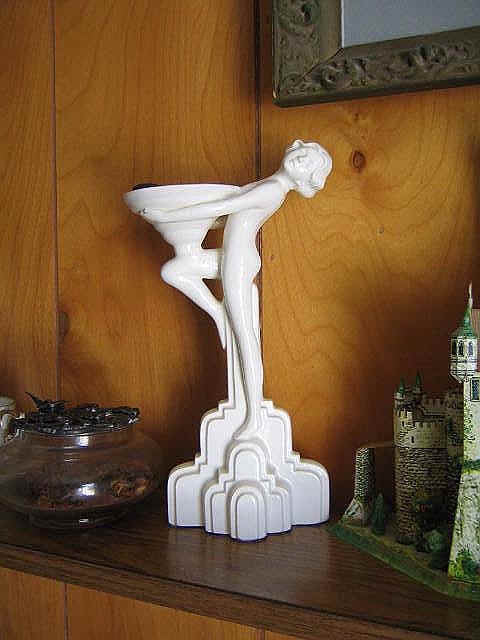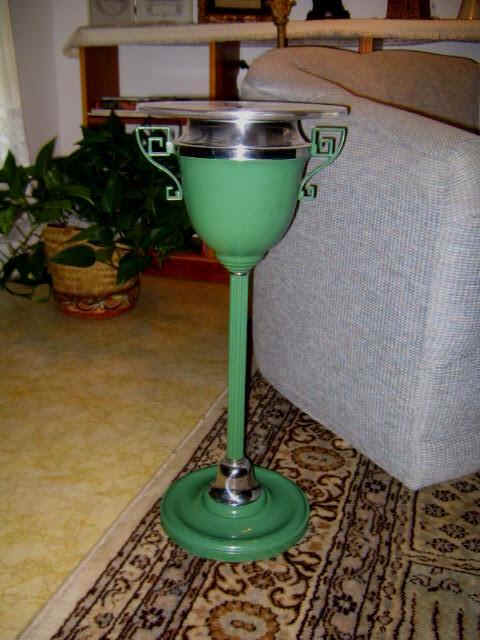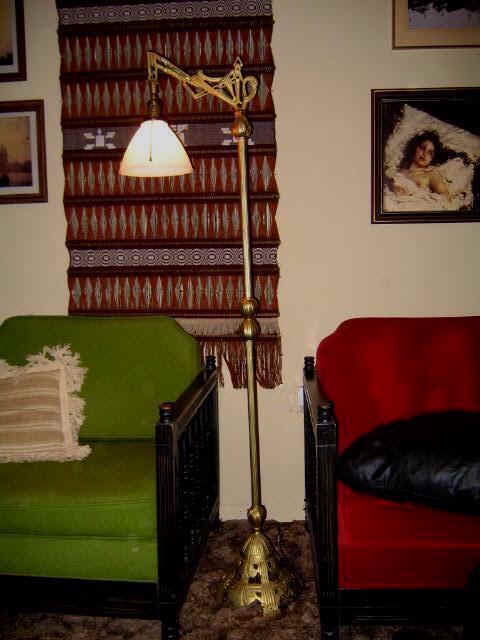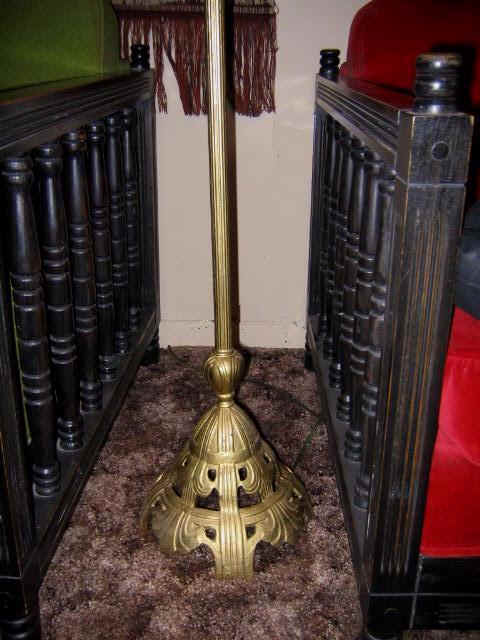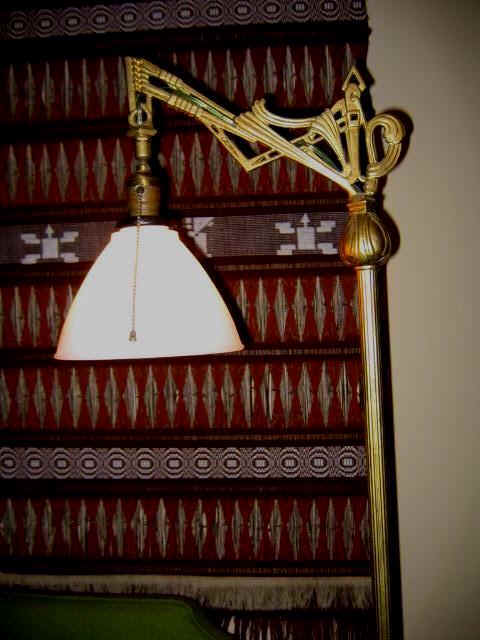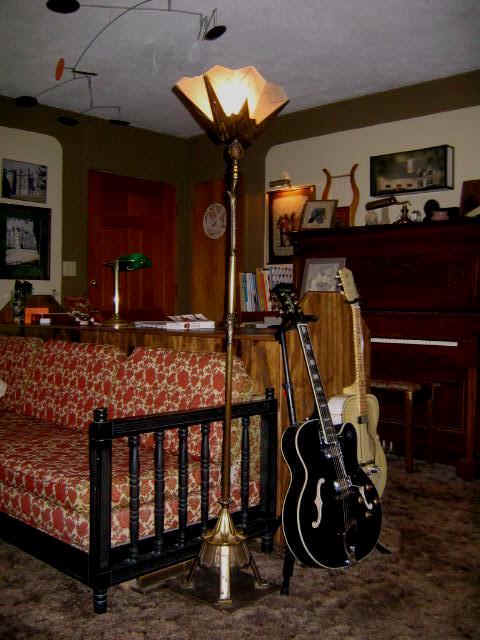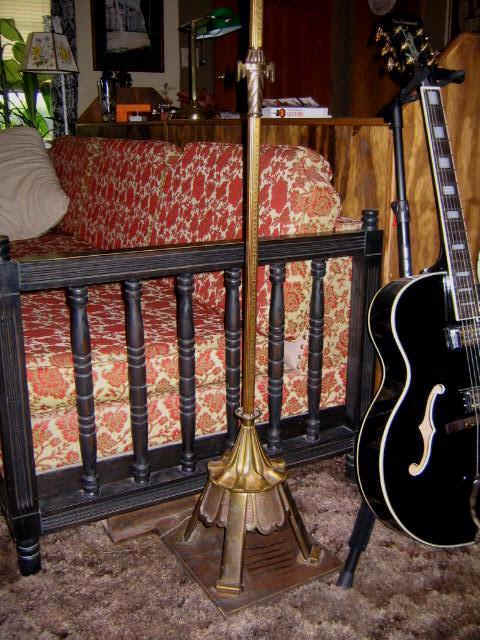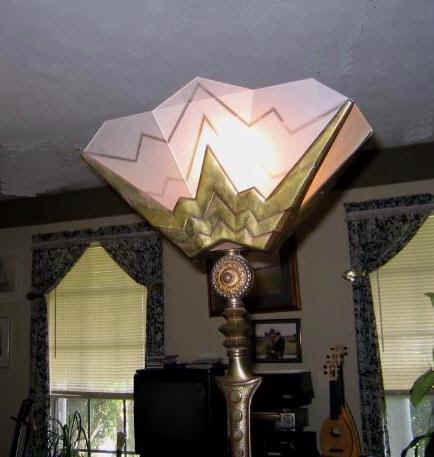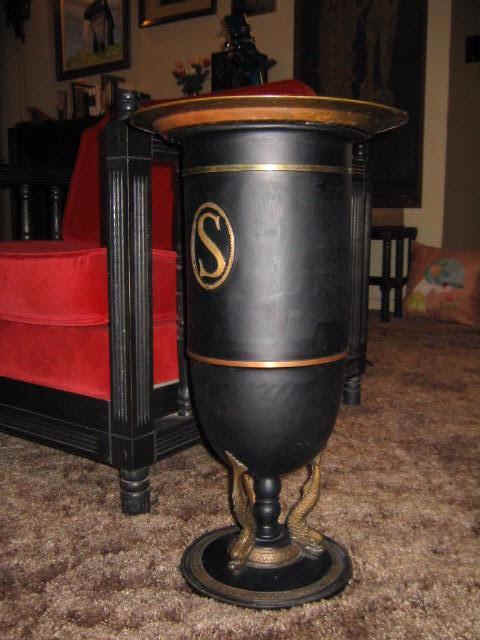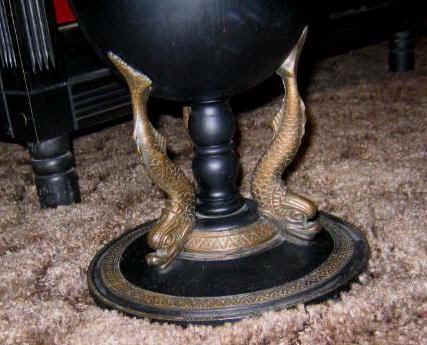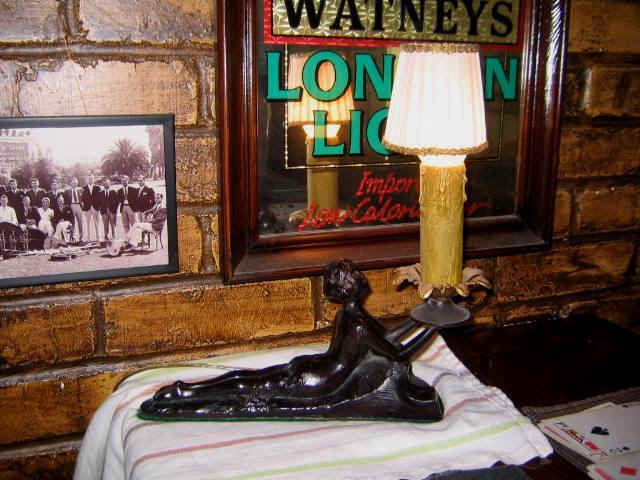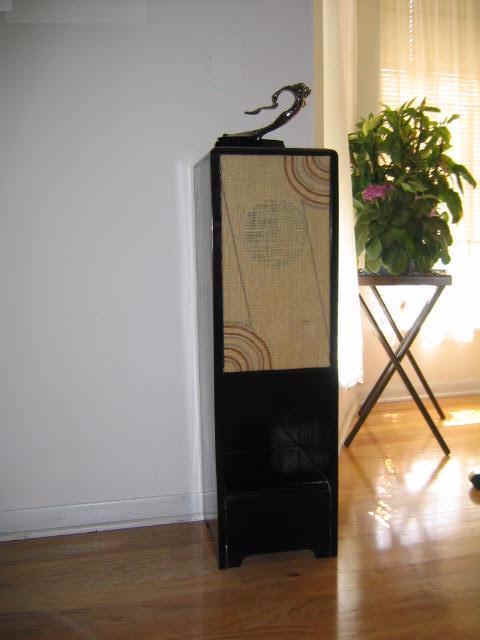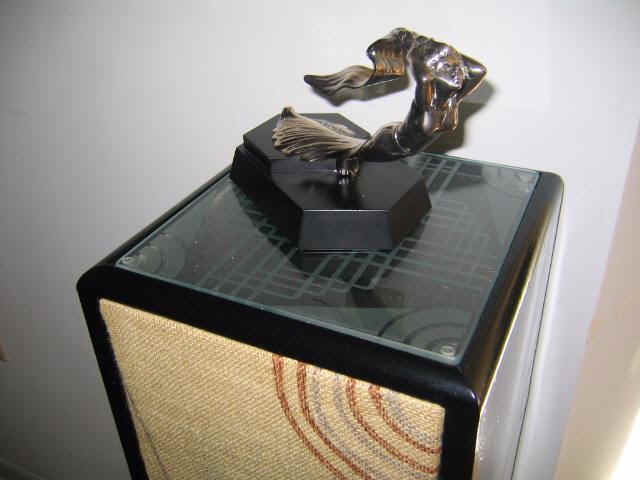Art Deco Architecture & Design |
The name "Art Deco" was derived from the 1925 Paris International Exposition of Modern Industrial and Decorative Arts (Arts Décoratifs et Industriels Modernes). It was acknowledged that there was no device, no matter how utilitarian, mundane, or mass produced, that it could not have an artistic shape and motif ... be Art Deco. In the 1930s, Art Deco was the artifact of the new industrial age; an age that was driving the art form. This was during the Depression but buildings still had to be designed and constructed. These indications of a modern future inspired people to sing, "Happy Days Are Here Again," and "We’re In The Money!" – true or not. Presented here are images of some of the small hotels of Ocean Drive, South Miami Beach, Florida. These "boutique-hotels," represented a specific phase of this Art Deco architectural period. |
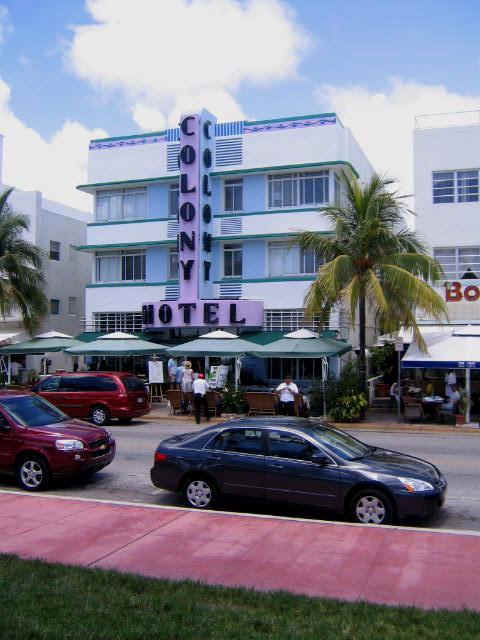 The Colony Hotel 1. Several of these small "boutique-hotels" were designed by architect Henry Hohauser, and the Colony Hotel was one. He designed this hotel in 1936. Hohauser attended the Pratt Institute in New York and every new architect was influenced by the New York City Chrysler Building and the Empire State Building, both Art Deco. Hohauser came to Florida in 1932 and his early success resulted in many projects. There were over 300 architectural designs in his name. Some small hotels looked like theaters. They should. Theaters incorporated some of the more lavish Art Deco designs. The Art Deco of the period could utilize a theater marquee (horizontal or vertical) better than many styles. Common to these designs were the window "eyebrows."
|
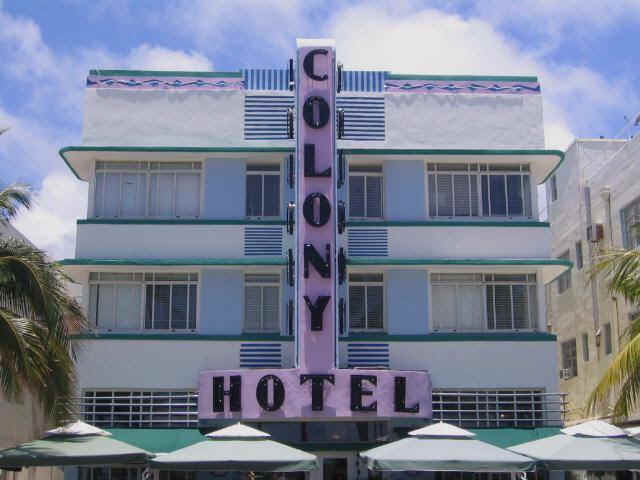 The Colony Hotel 2. The theater marquee impression is very obvious in this hotel. These boutique-hotels had soft lilac colors...robin egg blues, pinks, aquas, and soft jade...to accent the white backgrounds, all light and cool. The Colony Hotel was designed by architect Henry Hohauser in 1936.
|
.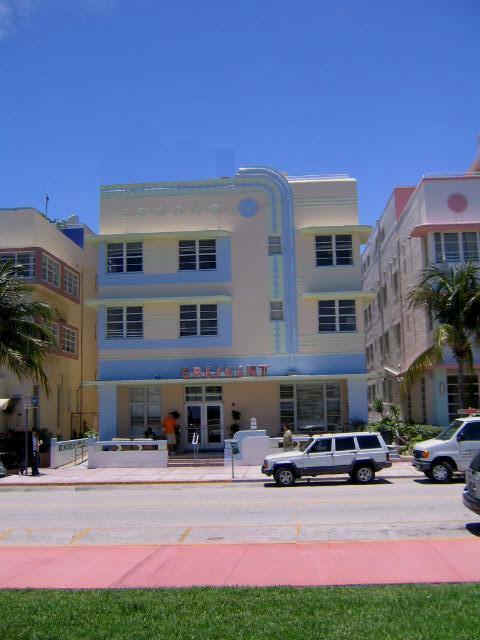
The Crescent Hotel
3. These small hotels were, in their way, as impressive in style as were the New York City Chrysler Building and the Empire State Building, but the small hotels possessed charm and welcoming appearances. The asymmetry of the Crescent Hotel is appealing...and the window eyebrows are expected in such a design. The Crescent Hotel was designed by architect Henry Hohauser in 1938.
|
The Cavalier Hotel
4. The complete facade of the hotel serves as an artist's canvas for pleasing geometric patterns. Noted architect was Roy F. France, 1936.
|
The Century Hotel 5. Another marquee hotel with window eyebrows. The Century Hotel was designed by Henry Hohauser in 1939. |
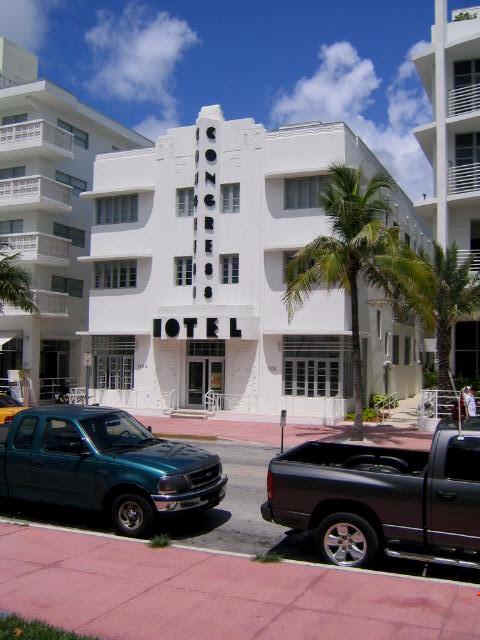 The Congress Hotel 6. The Art Deco period was a different time and with a different attitude. The near-uncontrolled exuberance of the Twenties had gone as flat as the stock market had in 1929. That was the end of the decade and the Twenties' general sense of frivolity and good cheer. The Depression brought a serious, no-nonsense attitude of "just surviving." Yet, modern Art Deco was the stylistic hope of a prosperous future. This boutique-hotel was designed by Henry Hohauser in 1936.
|
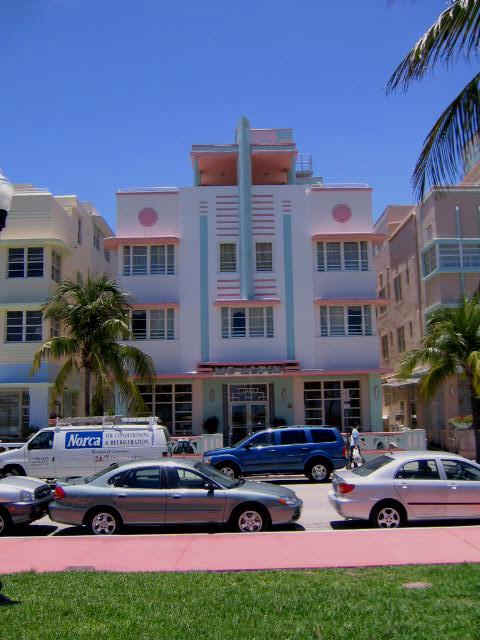 The McAlpin Hotel 7. Because of its readily apparent symmetry, the little hotel offers a sense of stability that its size might otherwise not justify. The architect was L.Murray Dixon, and the McAlpin
Hotel was completed in 1940, two years after the Crescent Hotel
on its south side.
|
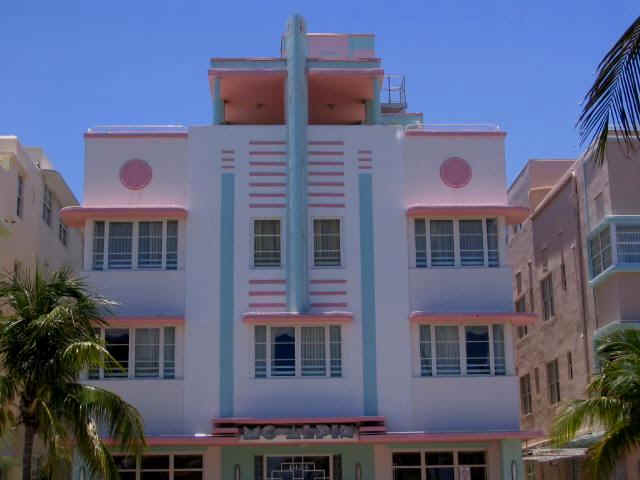 The McAlpin Hotel
8. The classic Art Deco boutique-hotel.
|
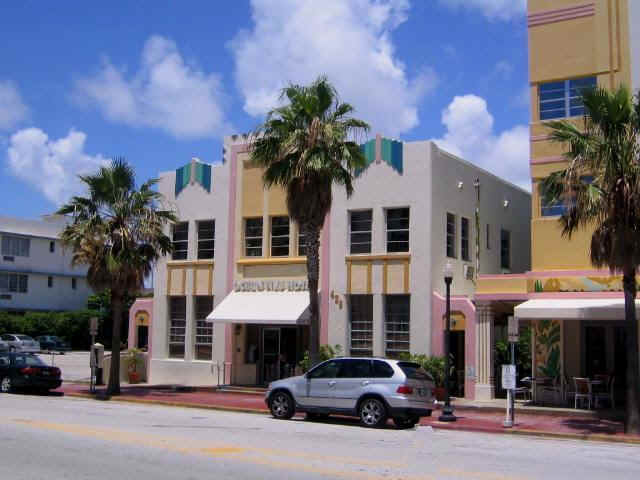 The Oceans Five Hotel
9. Designed by Henry Hohauser in 1936.
|
The Oceans Five Hotel
10. Designed by Henry Hohauser in 1936.
|
The Beacon Hotel
11. This boutique-hotel was designed by Henry O. Nelson in 1937. |
The Breakwater Hotel
12. The architect of this symmetrical marquee boutique-hotel was Anton Skislewicz. The Breakwater opened in 1939. |
. The Carlyle Hotel 13. With the design hinting at towers and vertical columns, the Carlisle still has eyebrows and an Art Deco flair. The architect was Richard Kiehnel and the Carlyle opened in 1935.
|
The Clevelander Hotel 14. Only the crown and the style of the hotel name gives a ready hint of Art Deco, yet, in its entirety, there is no mistaking its architectural heritage with window eyebrows. Albert Anis designed hotel in 1938.
|
The Majestic Hotel
15. The earlier portion of the building on the corner sets the style, while the add-on at the rear seems only that...an add-on. Henry Hohuaser was the architect of the original corner boutique-hotel. It opened in 1939.
|
The Park Central Hotel 16. Art Deco followed various local themes, and this being Miami Beach, it should be expected that hotels would have nautical styles with port holes, light house beacons, boat bows, wheel houses, patterns of surf, and sea shell panels in the buildings. All these are seen in the hotels along Ocean Drive. Henry Hohauser designed the Park Central in 1937.
|
The Park Central Hotel 17. Henry Hohauser designed the Park Central in 1937, but it hardly fits the description of "boutique-hotel." Still, its design is pure Art Deco.
|
The Starlite Hotel
18. The asymmetry of this boutique-hotel is almost whimsical and it gains some distinction on a street with many hotels of the same period and style. The hotel was designed by architect William Brown and opened in 1929. There were several sub-divisions of Art Deco -- Art Moderne being one; Mediterranean, another. The later Arts and Crafts carried many Art Deco styling artifacts into that design. The Prairie School did, as well. |
The Victor Hotel
19. Though pure Art Deco, its size makes it imposing among the boutique-hotels. The Victor Hotel was designed by architect L. Murray Dixon and built in 1938. |
The Waldorf Towers Hotel
20. This nautical themed hotel uses its corner location for full advantage. It is easily recognized from any angle from the four directions. The Wardorf Towers was designed by architect Albert Anis and opened in 1937. |
The Waldorf Towers Hotel
21. The beacon tower easily stands out on a street lined with unique hotels.
|
The Cardozo Hotel 22. On the north end of Ocean Drive is the Cardozo Hotel. It was designed in 1939 by architect Henry Hohauser. Henry Hohauser also designed the Essex House and the Edison Hotel. The Cardozo Hotel is owned by Gloria Estefan and her husband, Emilio, Jr.
|
The Cardozo Hotel
23. The Cardozo Hotel has a properly maintained Art Deco bar and lounge. The rounded corners and eyebrows speak of its Art Deco base. |
The Cardozo Hotel
The Cardozo Hotel Bar. 24. Geometric patterns in the window carried over into other styles of the 1930s and 1940s.
|
The Cardozo Hotel The Cardozo Hotel Lounge. 25. From the floor treatment to small details on the rarely needed fireplace, there are Art Deco flourishes. |
General Art Deco Design Styles
Six Items in Art Deco Style 26. During the 1930s, everything from automobiles to door knobs, from toasters to faucets, from large clocks on buildings to ladies’ small wrist watches... everything had the geometric influence of Art Deco.
|
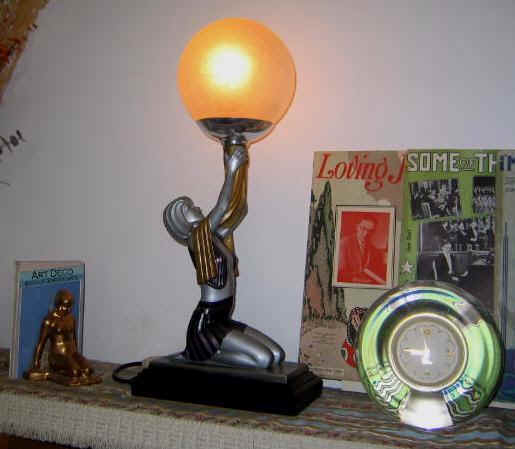 27. Lamp lady has short hair of the period and the general Art Deco style. This is an accurate replica from England. The small brass bookends to the left are Art Deco originals...the clock movement is glass encircled. The use of glass in decorative shapes is common in Art Deco. Glass construction blocks were popular at the same time. Art Deco was an industrial rebellion against the preceding Art Nouveau of the Victorians. That period represented natural art. Or rather, art influenced by Nature. Everything had a sinuous entwining of ivy and leaves. Long hair was popular with the ladies then and the flowing gowns were as wavy and "s"-curled as the seemingly viscous, undulating world about them.
|
28. Original Art Deco lamp between an Art Deco replica radio and an original Art Deco picture frame. Individual's silhouettes were cut with scissors by travelling artisans. Everything manufactured could benefit from a designer's pen. The engineers were now collaborating with stylists.
|
|
29. Classic Art Deco styling on a replica clock. Original clocks of this design are still found in vintage shops.
|
30. This is another replica but of classic Art Deco design elements. This was a cuff link or collar stud holder. Sometimes incense cones were placed in the small tray being held by a young, lithe lady with short hair. The Victorian plumpness was not seen in Art Deco.
|
|
31. An original Art Deco smoking stand, but here with a Plexiglas occasional table top. The original Oriental jade color was very popular at the time. Even with the "mechanical" scroll handles, it has a classic beauty. The fluted column was common. The Art Deco scroll had, for the most part, straight lines with 90° turns, not the expected formulated snake curves of earlier...or later...days.
|
32. This original bridge lamp has a blend of styles that reflect the changes taking place toward the end of the Art Deco period. This piece is evolutionary; not revolutionary, yet the four lotus blossoms precedes Art Deco. There is one at the base, one at the bridge and two in the center of the fluted column.
|
33. The base is topped with the classic lotus blossom from the Egyptian influence that took place with the discovery of King Tut's tomb. There is an attempt at natural designs but still stylized in a more industrial manner.
The small foot print of the base was designed for wood or stone floors...not deep carpet,. Heavy carpets were not popular at the time. Consequently, some bridge lamps are unstable on deep carpet. |
34. The lamp has a mechanical crane style for the bridge and yet with hints of stylized leaves, and the lotus blossom gives every indication of Art Deco in transition. Lamp globe and socket are not hinged as expected, but rather, they are hanging from a ball and socket arrangement. |
35. This is an original Art Deco torchiere of a signed piece. Again the base is not designed for soft carpeting so in this case the base has been secured to a more stable base. (No traceable modifications were inflicted on any of these items.) |
36. The base is very utilitarian but still with an artistic flare as defines Art Deco. The mid-column break appears more martial and Teutonic than might generally be expected. The column is octagonal with flutes on four sides and embossed triangles in the other. |
37. The lamp columns break at top is styled more as a sword hilt than a lamp and the roundel at the torchiere is a twist button power switch that is incorporated as a design element...again, as was common with Art Deco. The stark, martial flare at the glass is certainly not from nature. The multiple layers of acid-etched glass completes the overall bold look of what was in practice just another lamp to brighten a 1930 room.
|
38. This smoking sand bucket was in the Sheraton Hotel lobby in St. Louis for a number of years. It utilizes cast brass, brass bands, copper sheeting, and bronze castings.
|
|
39. Art Deco incorporated many popular and current themes and in this case the Oriental. Cast into the bronze base are Chinese characters and the dolphins supporting the central piece is from Oriental designs.
|
|
40. Original night club table lamp. These exact model lamps can be seen in 1930 black and white movies. Missing here is the ash tray that would have been secured under the young lady's hands. This would have held the ashes from cigarettes resting on the patinaed bronze supports at her elbows. Smoking had a different connotation then than now and the wafting curls of smoke passing through the heated air of the lamp would contribute to the general spirit of relaxation.
|
|
41. There were no fully utilitarian items that escaped Art Deco styles. Fabrics had the familiar Art Deco patterns and is incorporated into a display stand for art and here serving as a speaker enclosure.
|
42. Acid-etched glass follows the same Art Deco patterns as in the fabric. The nickel plated young lady is not Art Deco -- it is Art Noveau. The lady has the flowing, sensuous and sinuous hair blowing in the wind. It graced the hood of a 1931 Cadillac.
|
ugofo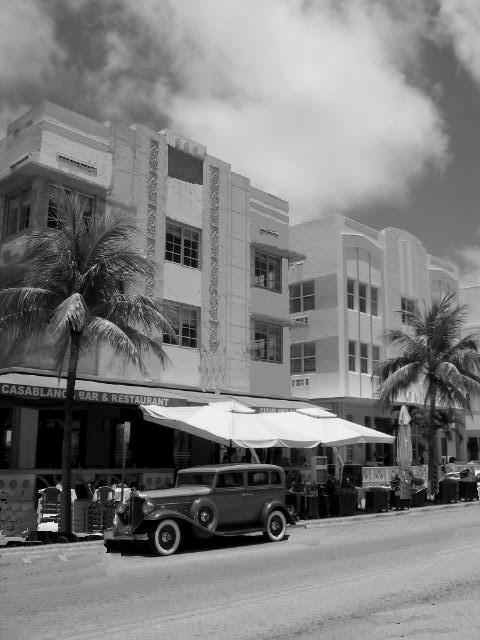
The Casablanca Bar & Restaurant 43. But, as with any art, when the design had saturated the mass markets, people grew tired of its boldness. And then the designs were thought gaudy... and they were. The art had not changed; the people’s attitude had. Art Deco started to wane as the nation's attention was shifting to the serious business of making war. World War II was more sobering than the Depression but not as debilitating. There was enthusiasm but not of the Twenties’ giddy sort. There was now a real purpose in the United States of the 1940s. Yet, still today the period of Art Deco and the Art Deco boutique-hotels can be enjoyed. It is constructive to recall the period when the extremes between the Haves and the Have-nots were never more obvious. But then, the Have-nots looked up to the Haves and they were inspired by them.
|
|
To comment on details this website Webmaster |
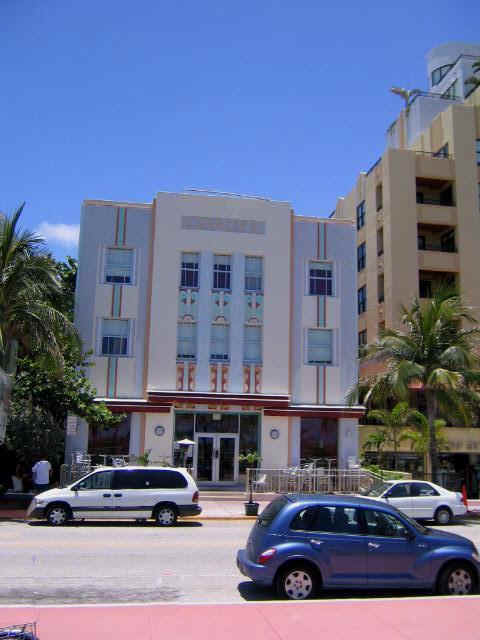 p
p 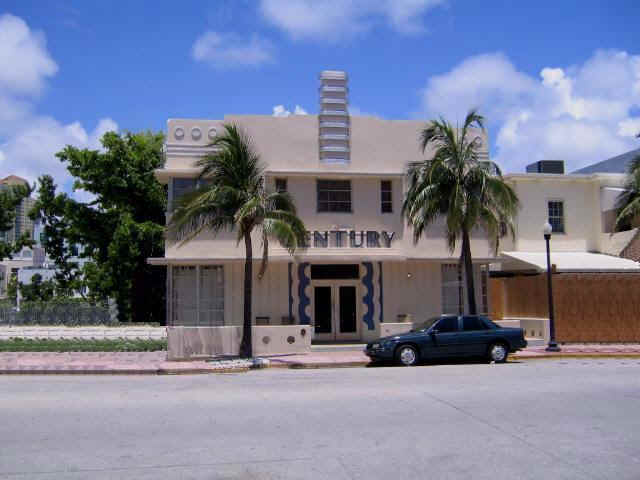
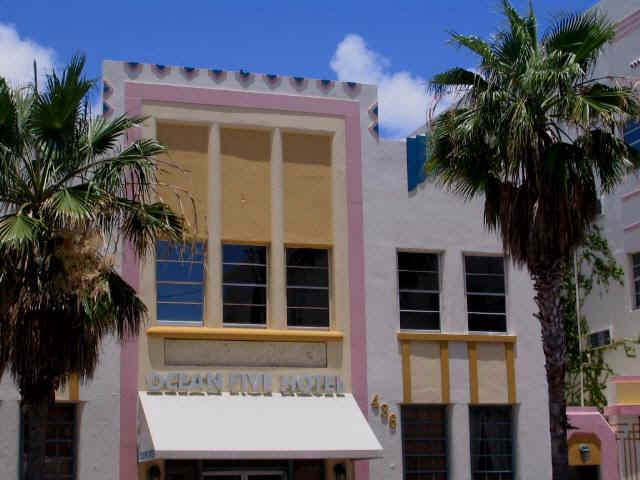
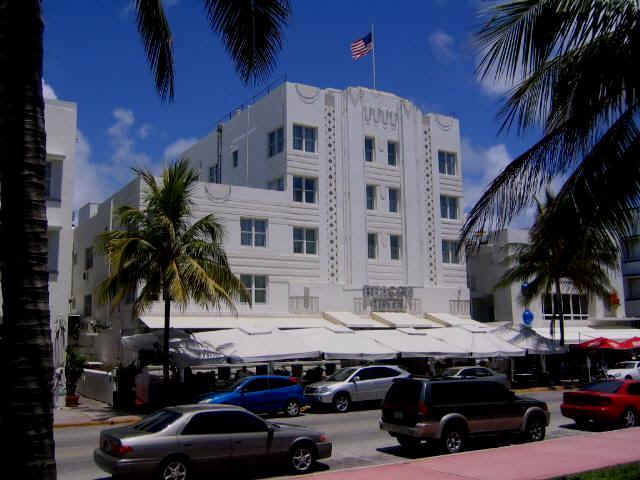
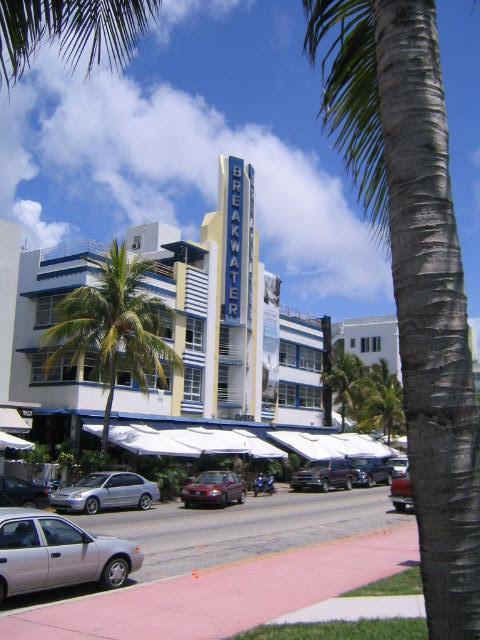
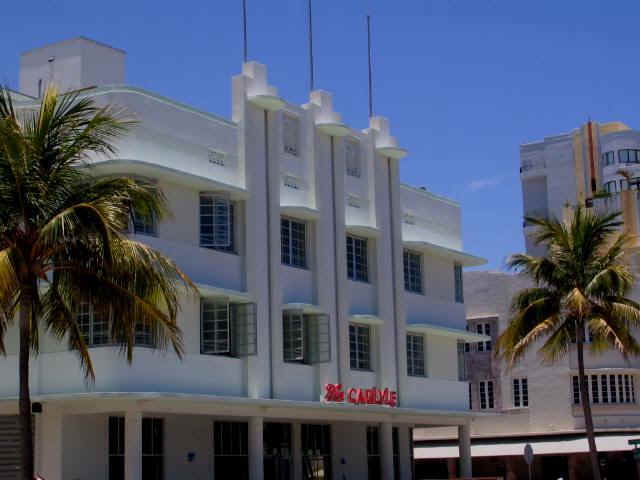
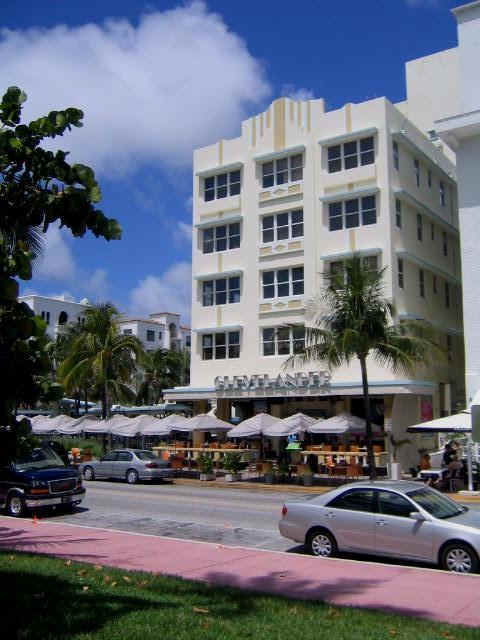 T
T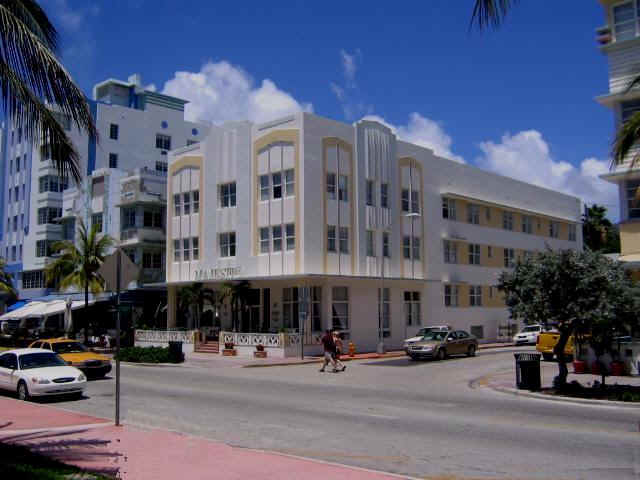
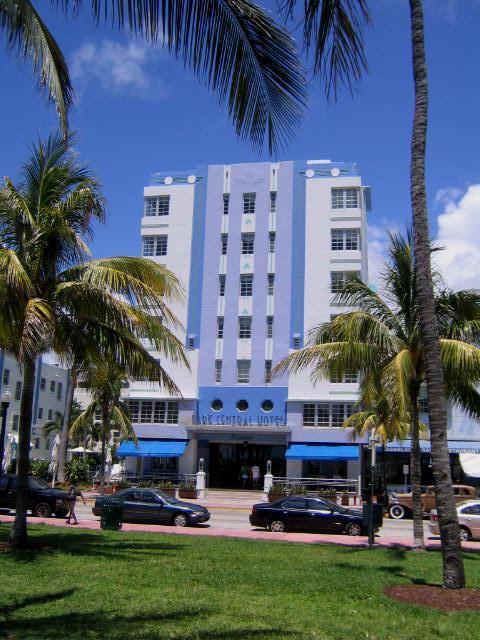
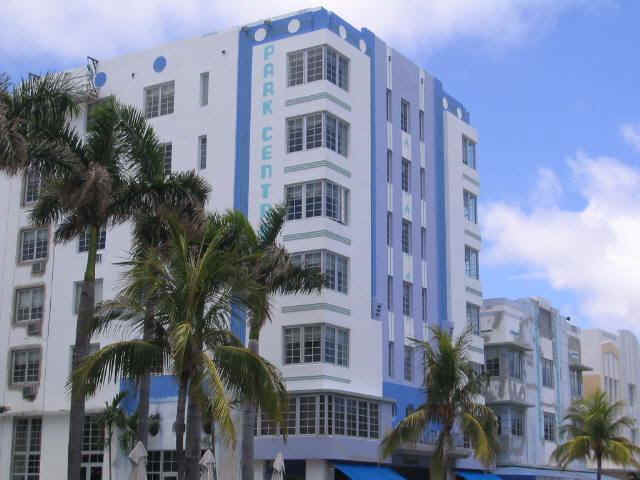
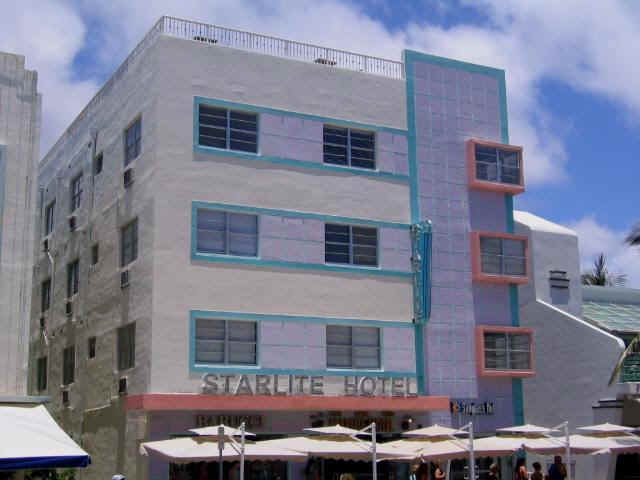
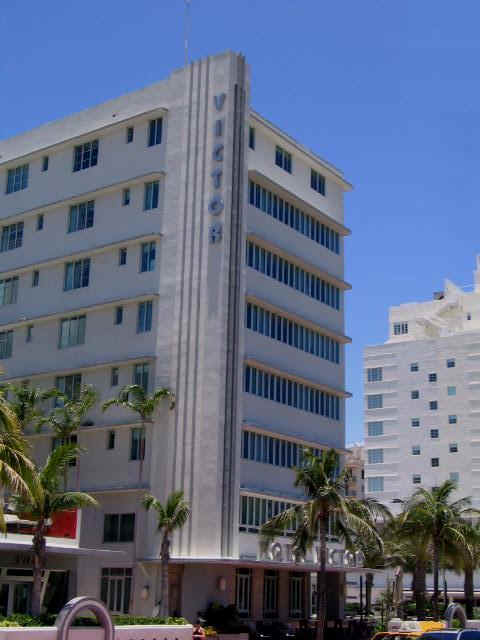 Ja
Ja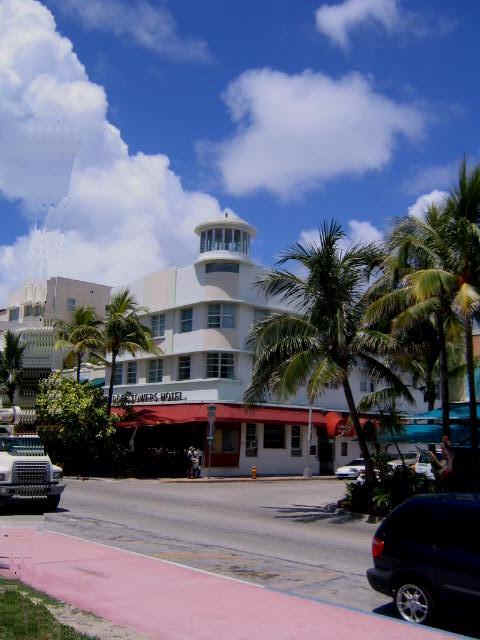 R
R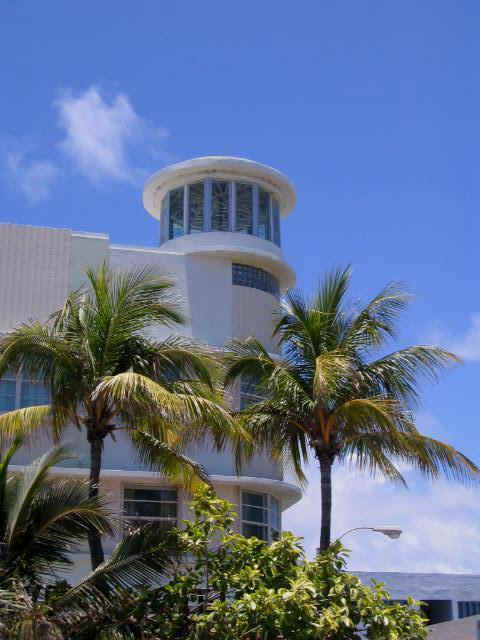
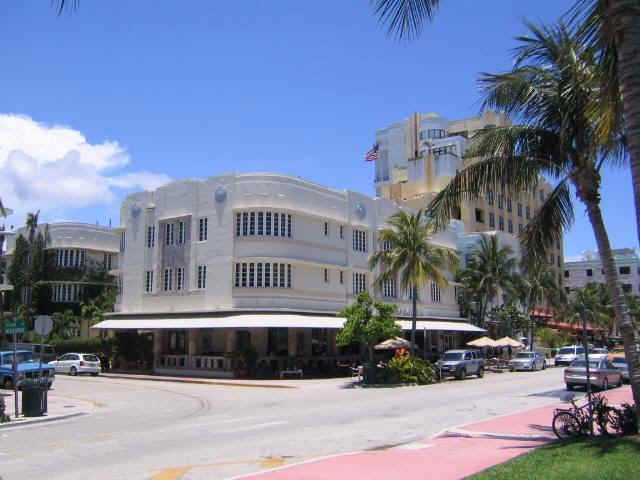
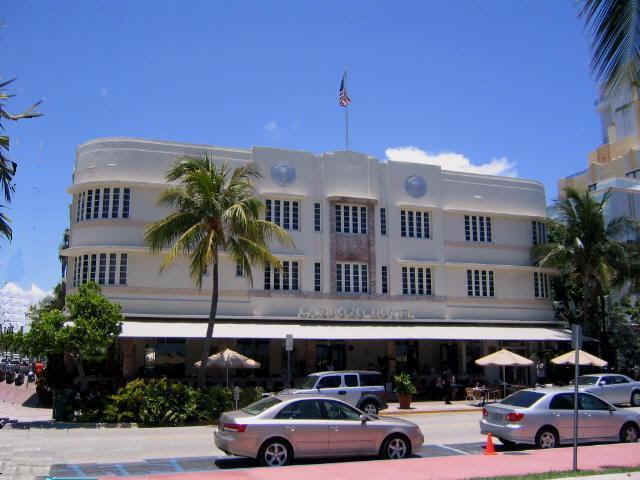
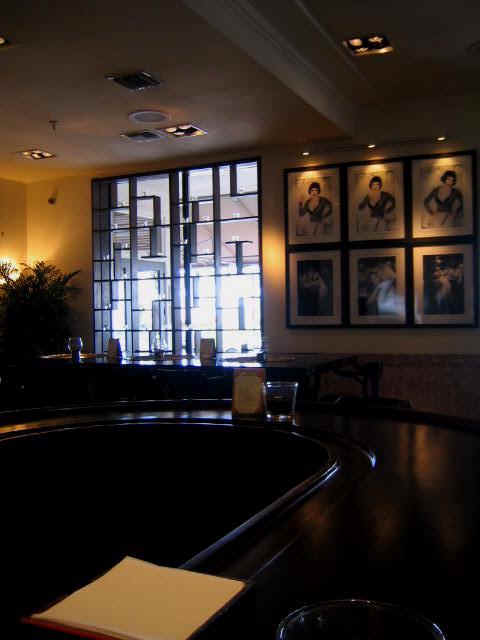
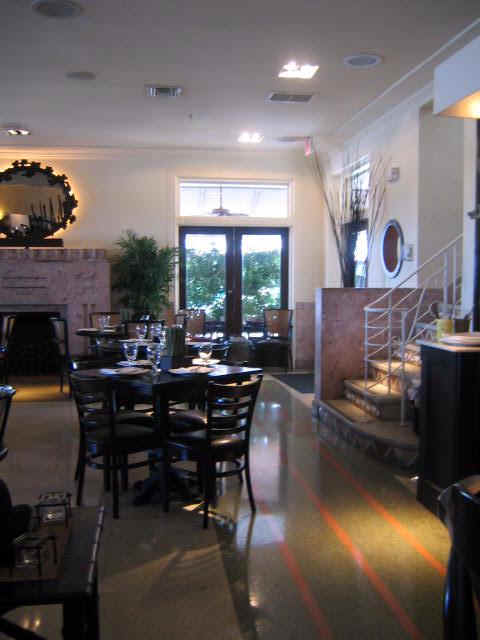
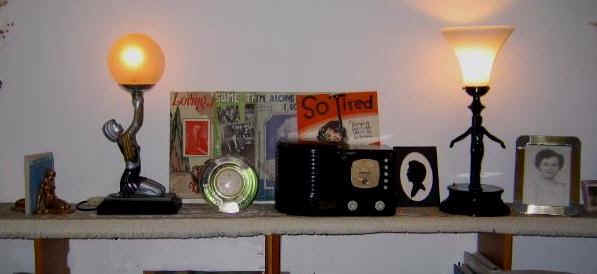
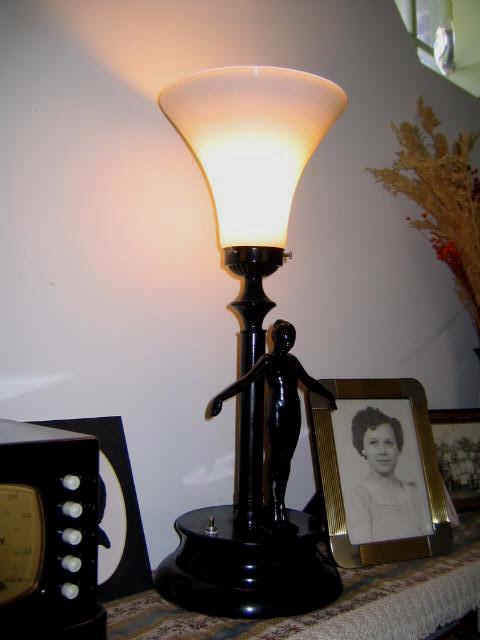 j
j